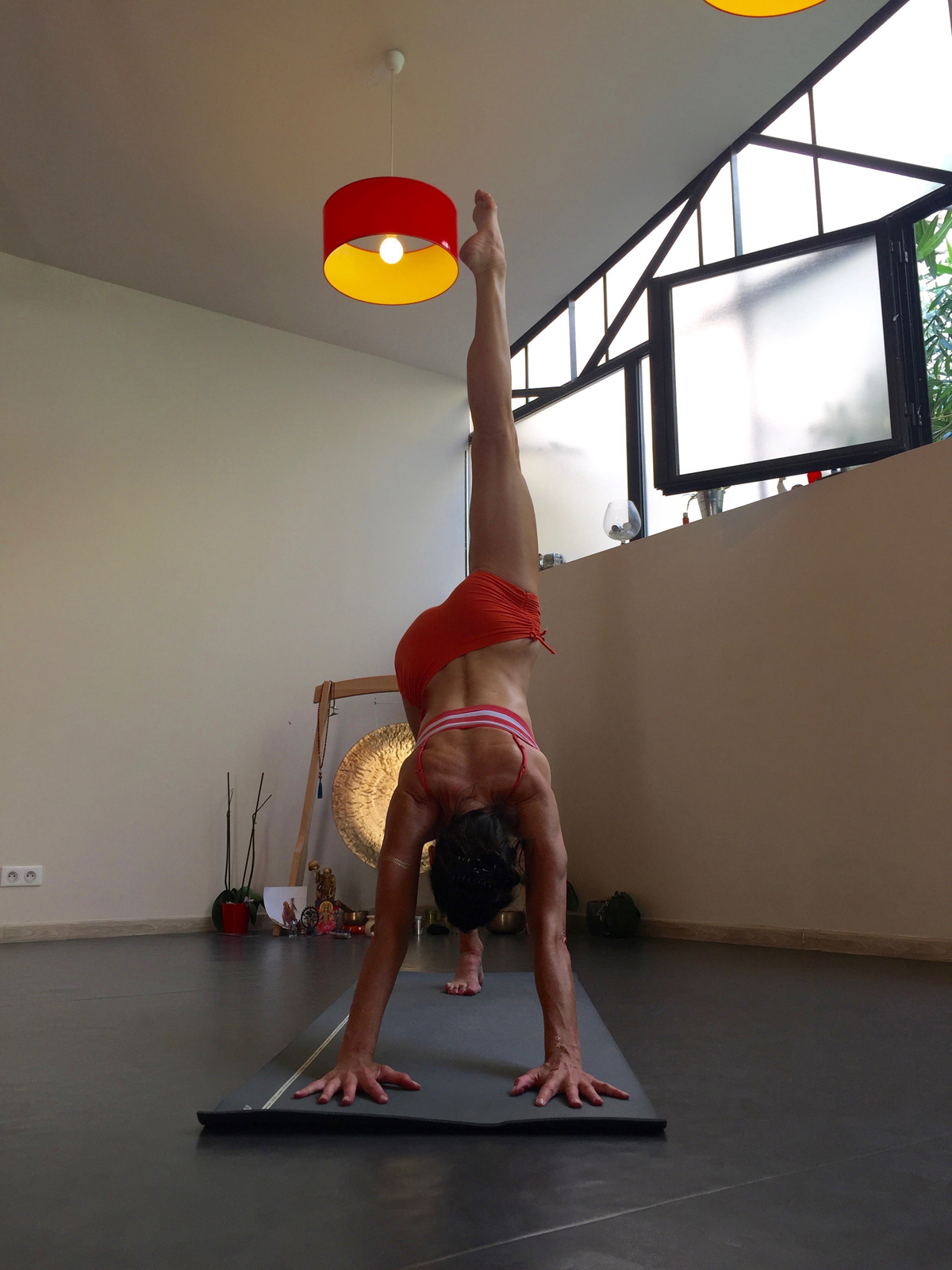By Melissa Snow with Mark Deterline —
As a personal trainer and yoga instructor, I meet a lot of athletes and workout fanatics who tell me that they just don’t have time to add “stretching and breathing” to their already intense training schedule. They do not realize that yoga is so much more than just stretching and breathing.

Yoga includes dynamic flexibility training, core and spinal stabilization exercises, strength and balance work with focus on joint stability while increasing range of motion.
I have not met one athlete who, after starting and staying with a consistent yoga practice, has not seen multiple benefits – fewer injuries, quicker recovery time, better endurance, increased performance, help with sports specific muscular imbalances, a stronger core and less lower back issues. Yoga goes beyond simple stretching by working the muscles and joints through different planes of movement and by activating the little-used muscles that support the larger primary muscle groups.
Here are my top 6 reasons for everyone to do yoga:
- Core strength. Stretching and strengthening of the abdominal, paraspinal and pelvic muscles, commonly referred to as “core” are extremely important to maintaining a healthy spine. When these muscle groups are strong, they take pressure off the spine and help prevent injury. Core strengthening is one of the cornerstones of yoga.
- Injury Prevention. Athletes put stress on their bodies during both training and racing. Repetitive overuse of certain muscle groups causes imbalances in both strength and flexibility. When muscles are tight, they pull on the ligaments and joints. Muscle tightness puts athletes at greater risk for muscle strains and tears because of the muscles’ resistance to movement. More pliability and flexibility in the muscles can help prevent injuries. In yoga, we work the muscles around the joints for stability and full mobility in the joints, making an athlete’s movements more fluid.
- Body Awareness. Our sixth sense is often referred to as proprioception. This is the ability to perceive our body from the inside, with our “mind’s eye”. We can perceive our body’s position in space, the direction and speed of our movement, where and how we initiate our movement and what muscle groups we are using to move. We are continually practicing this throughout yoga class, by “going inside” our bodies. We gain a deeper understanding of how our body moves in various ways in relation to the spine. We develop a deeper sense of awareness and mindfulness when we move. This helps not only with our reaction times but with our efficiency of movement.
- Stress reduction. Yoga teaches us how to calm the nervous system and the mind when faced with physical challenge and stress. It teaches us how to breathe through this. Competition and training can increase stress both in the mind and the body. It’s important to be able to relax under pressure and achieve mental focus, clarity and calmness. This in turn, allows for optimal performance. Yoga is often called a moving meditation because we practice the ability of being completely in our bodies, in the present moment, with our breath.
- Balance. Yoga teaches us alignment with our spine, our joints and our muscles. There is something called the “law of compensation,” which states that our bodies will always take the path of least resistance when unconscious in our activity. Generally, this this represents the weakest areas of the body. When we practice yoga, we see where we have been compensating and begin to create balance in the body by working on symmetry. We begin to discover and realign our weaknesses and our strengths.
- Mental focus and awareness of breath. Yoga is an opportunity to learn how to be present and to focus our minds. We learn to be an observer of our thoughts and to notice patterns which might be holding us back is we weren’t conscious of them. We learn to let go of what no longer serves us. Yoga also teaches us to become aware of the quality and the length of our breath. We learn to manage our own nervous systems, our “fight or flight” reactions and bring them back into balance in any situation. Through breath work, we also strengthen the diaphragm and expand our lung capacity. This means increasing the amount of oxygen coming into the body, the muscles and the cells and increasing our endurance.
Note: This article originally appeared in the Winter 2016-2017 issue of Cycling Utah and Cycling West Magazine. Melissa Snow was a former professional dancer, having performed several years in France. She was also a sometimes bike racer for the Canyon Bicycles cycling club and a certified yoga instructor. Ms. Snow passed away in October 2017, on her 50th birthday. After a lengthy illness, Mark Deterline passed away in July 2019.

